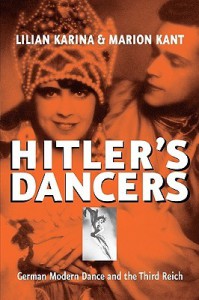Simcha-Sophie
a lovely mishmash of opinions interspersed with moments of clarity and vision by a vegan lesbian feminist mystery-loving, history-loving reader and writer.
Currently reading
Hitler's Dancers

I have to admit that this book took me about two years to read - I was always picking something to read alongside it.
This book is interesting in terms of how dancers, particularly modern dancers, in the early Nazi years were swift to embrace Naziism and its racist tenets. But it is not written for people with little knowledge of the major figures of German dance. For that to be the case, the book should have been set up with at least a concise description of some of the major figures, pictures of Laban and Wigman. I had heard somewhat of Laban from movement classes I took in theater school some 20 years ago, but beyond his name I knew nothing about him. Kant does backtrack a bit into her section to tell us about Laban and von Keudell, but she does not offer similar history about Mary Wigman or Gret Palucca.
Perhaps if the setup of the book had been different I would have found this easier to get through. Karina's section is somewhat more interesting, being personal history, but she definitely has an understandable axe to grind, and without a more concise overview of the major players, it is rather difficult to follow who is who (the fact that I would go some weeks between readings probably also played into this).
And the appendices, while interesting, are mainly documents supporting Kant's research and much as one might suspect when reading official documents -- extremely boring. In another way it is always interesting to have contemporary documentation - the book "The Nazi Years" by Joachim Remak is comprised mainly of translations of such, but is actually easier to read -- and a couple of the letters concerning Jewish children wishing to attend ballet school, and one dancer's arrest for homosexuality -- are much more interesting and strike the reader more for their personal, rather than academic and/or governmental tone.
But for the most part this is a dry, academic book. People who like that would probably like Kant's section (They might find Karina's too "anecdotal") -- or maybe people with an already-large knowledge of Laban, Wigman and other leaders of modern dance (did you realize Isadora Duncan was basically a Nazi, or at least believed strongly in racist genetic theories?). It is a valuable book, proving that leading dancers readily embraced Nazi policies, but it is not super reading for the lay person.








